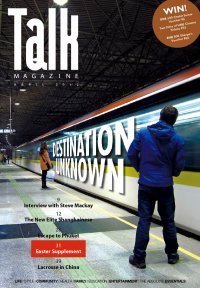Qingming Jie: Remembering the Ancestors

I can’t describe myself as an inveterate tombstone tourist or a ‘taphophile’. I don’t have a strong passion to visit cemeteries for my own amusement or in search of the graves of famous people. But as Qingming Jie approaches, I find myself at Songheyuan, one of the biggest cemeteries in Shanghai, looking for the answers I seek to understanding what Qingming Jie, or Tomb Sweeping Day, really is. And who can tell more about rituals, ghost money and tomb sweeping than a cemetery worker?
Qingming Jie, also known as Ancestors Day or Tomb Sweeping Day, is one of the most important holidays in Chinese culture. Usually, Chinese people don’t visit their parents’ or relatives’ graves regularly, but they go to the cemetery at least once a year; often, as a rule, on 4-6 April of the Gregorian calendar when Qingming Jie is celebrated.
Qingming Jie has a long history, and has been in Chinese tradition for over 2,500 years. It is a festival that is taken very seriously in China, as well as in countries with overseas Chinese communities, such as Malaysia and Singapore.
“On the graves we [Chinese] leave things that the person liked most of all in their life: flowers, baijiu, cigarettes, their favourite food. We also burn mingbi (joss paper or ghost money which can be bought at many street vendors in late March) for those who have passed away,” says Cun Ming. “A pack of it costs around RMB 10.”
Cun Ming is a cemetery worker at Songheyuan, which is one of the biggest graveyards in Shanghai, located close to the Shanghai International Race Circuit. When asked why people burn mingbi, he smiles, as if the answer is obvious. “Money, ‘there’, they need that too .
“We usually go to the cemetery early in the morning, spend at least a couple of hours sweeping and cleaning the tombs, because this ritual makes us closer to our relatives. Sometimes we even talk to them”, he continues. “The weather during Qingming Jie often is good, and so after the morning rituals, we normally walk in a nearby park and then go home to have a meal with family.”
Regarding food, many Chinese people only allow themselves to eat cold dishes on the days of Qingming Jie days, not hot food. And the most common meal is Qingtuan, a traditional Chinese dish. Qingtuan is green in colour, looks like rice balls and is made of rice flour and wormwood juice, usually filled with red bean paste.
 Qingming Jie is a strong reflection of how much Chinese people care about their history, but is also an integral part of history that has been incorporated into modern culture, the most striking example is of course Zhang Zeduan’s Song Dynasty masterpiece Along The River During Qingming Jie (1085 – 1145AD).
Qingming Jie is a strong reflection of how much Chinese people care about their history, but is also an integral part of history that has been incorporated into modern culture, the most striking example is of course Zhang Zeduan’s Song Dynasty masterpiece Along The River During Qingming Jie (1085 – 1145AD).
To understand more about Qingming Jie, there are a variety of books available at the Shanghai Foreign Languages Bookstore, 390 Fuzhou Lu, near Shaanxi Nan Lu. Alternatively, visit the Shanghai World Expo site and see ‘The Scroll’, a 128m long and 6.5m high 3D animation of Zhang Zeduan’s ancient painting.

